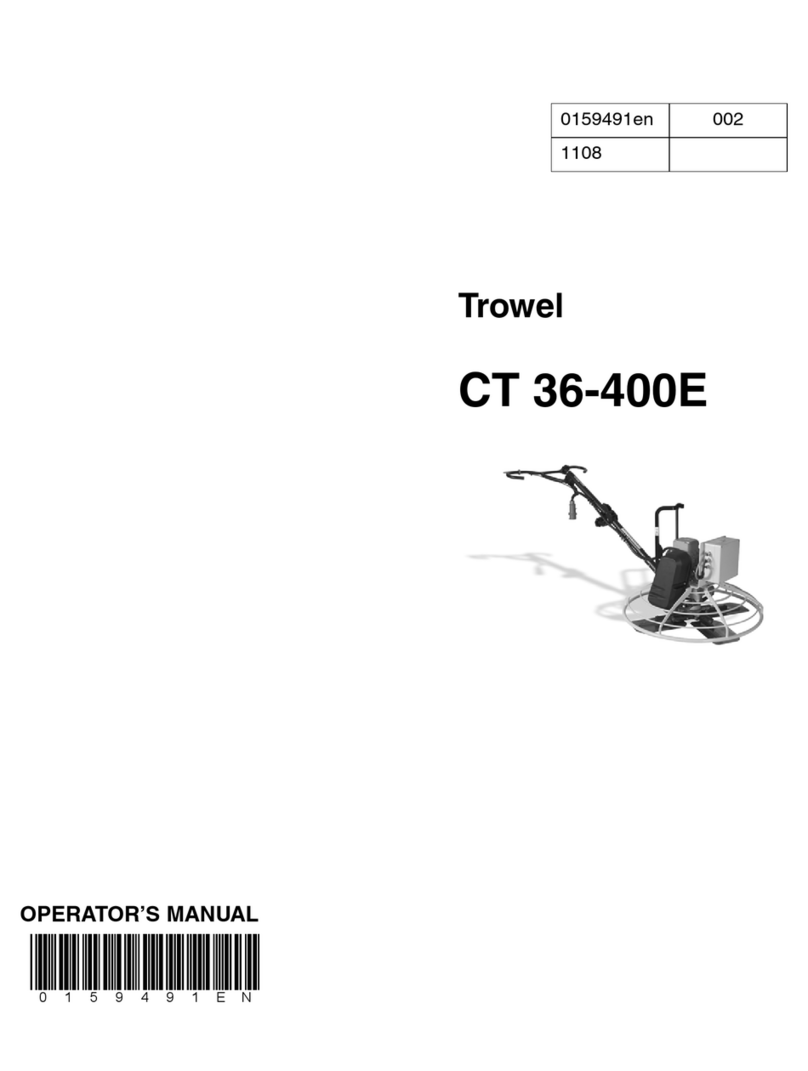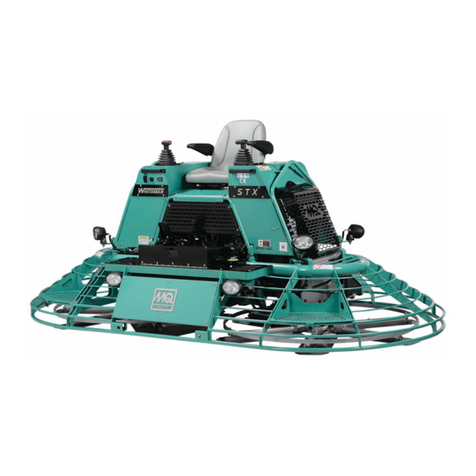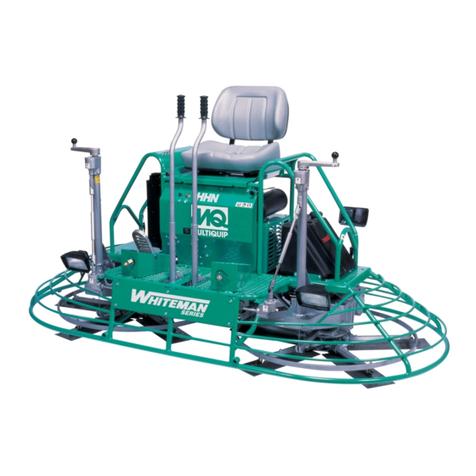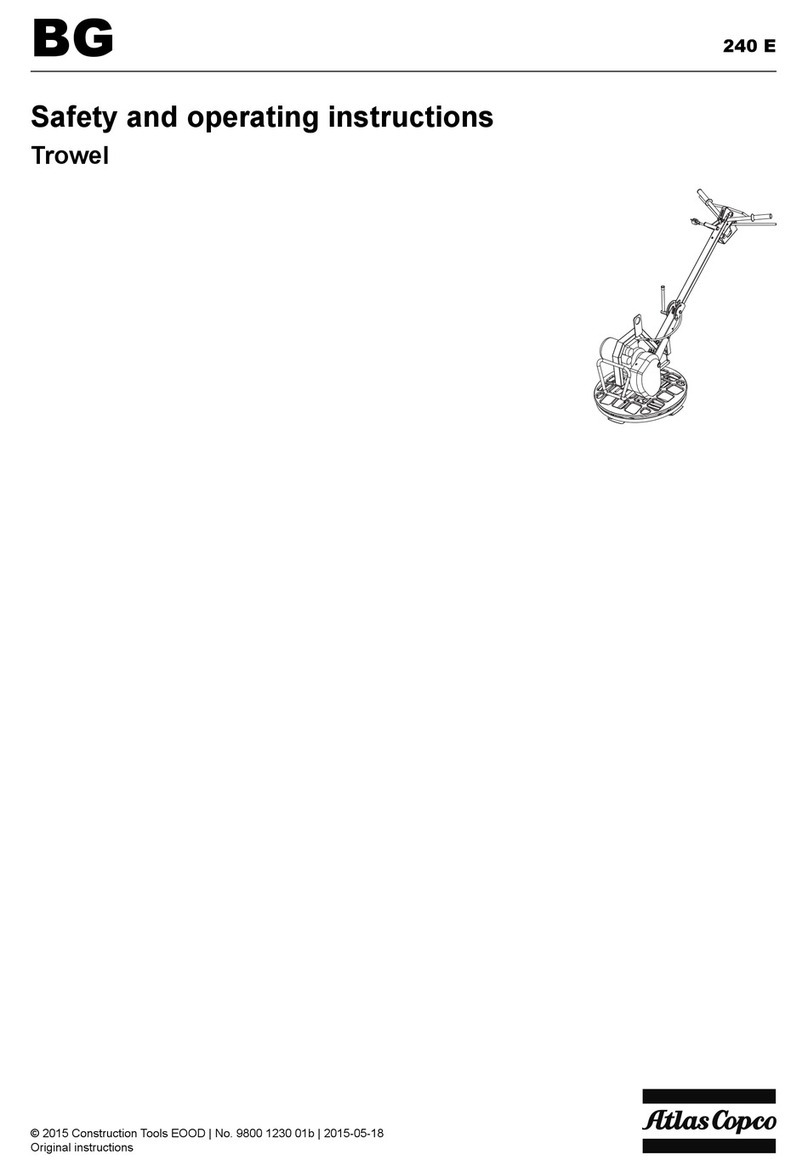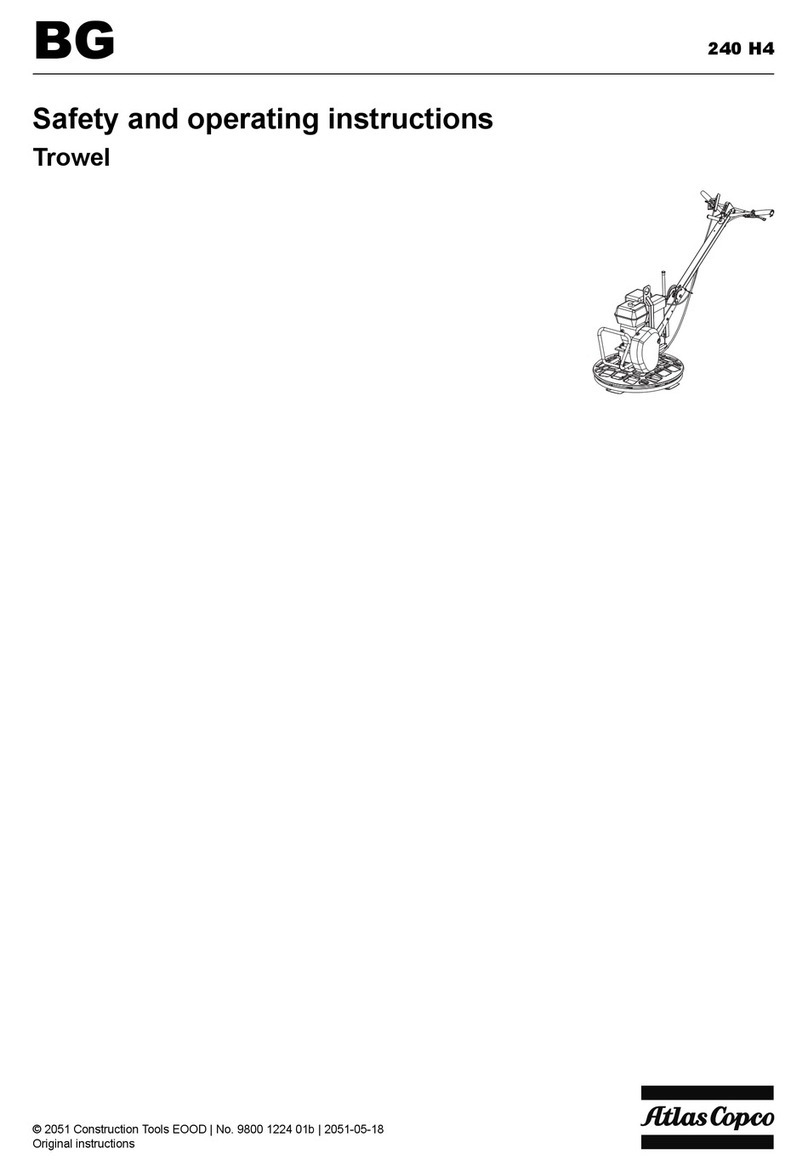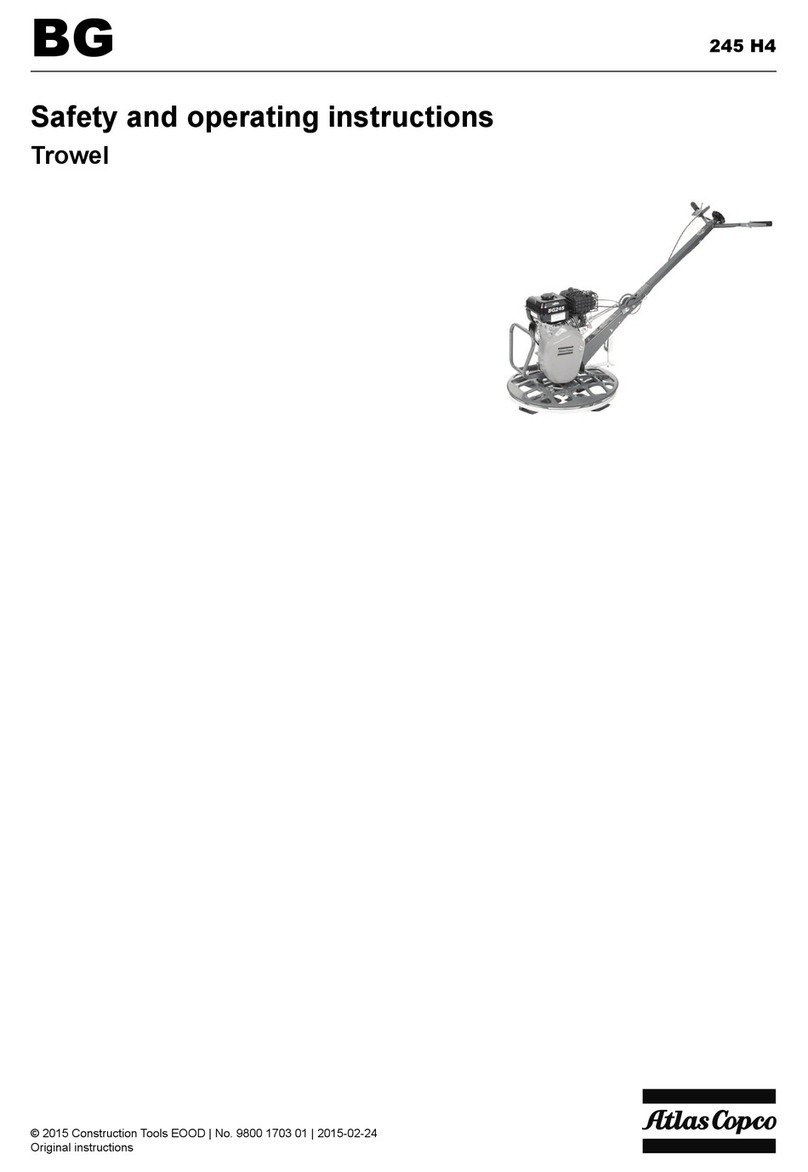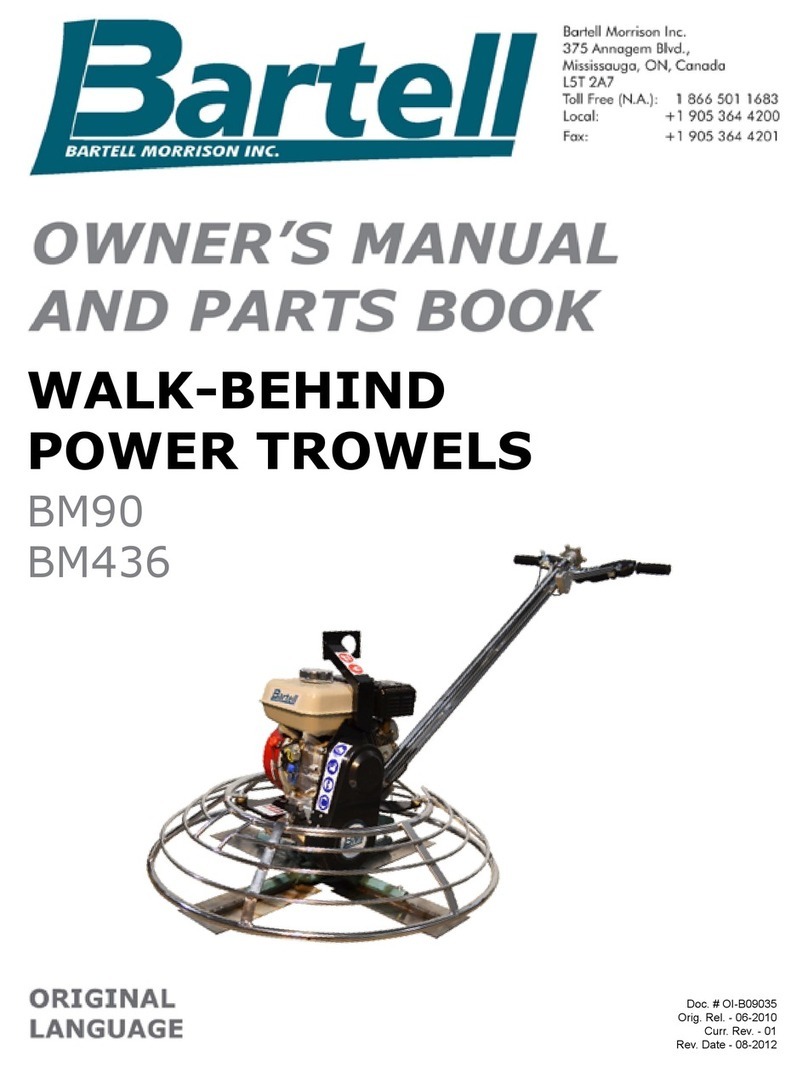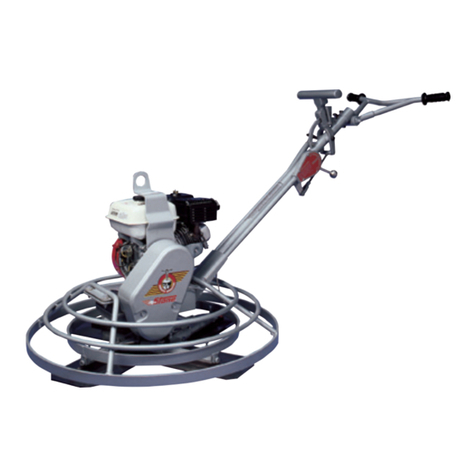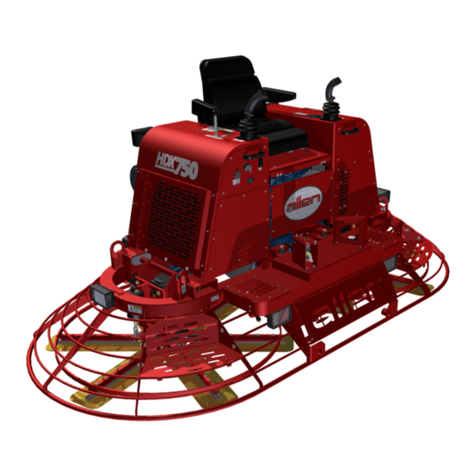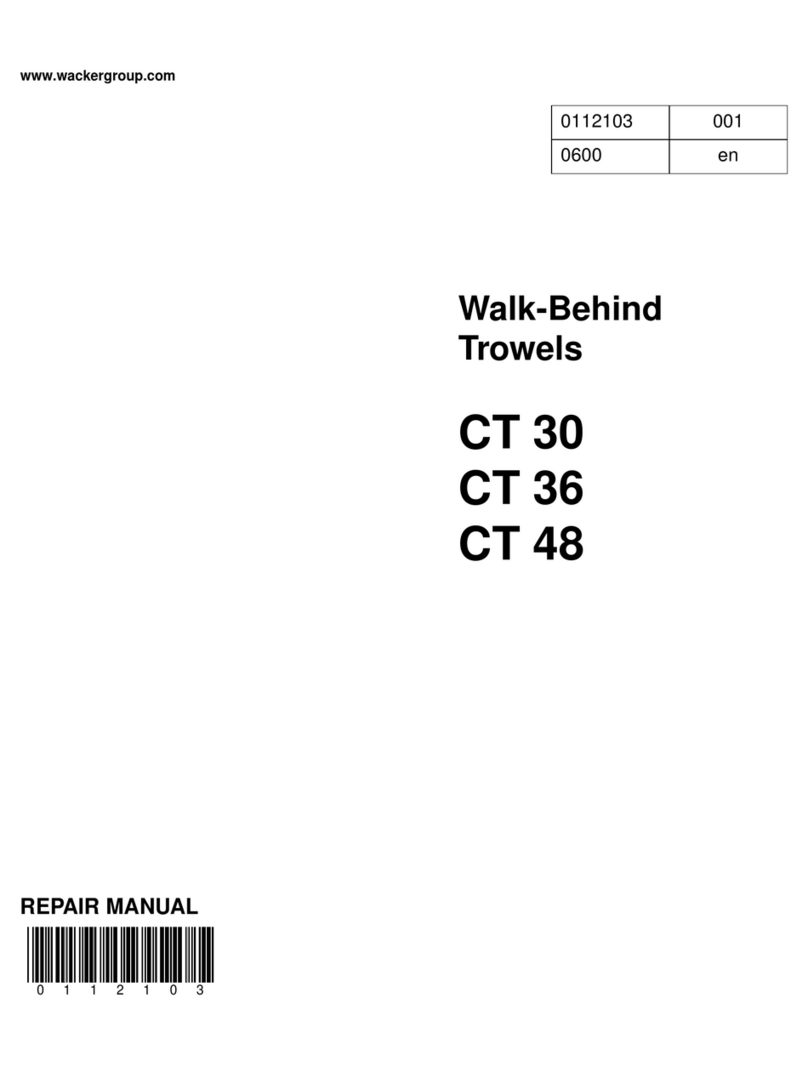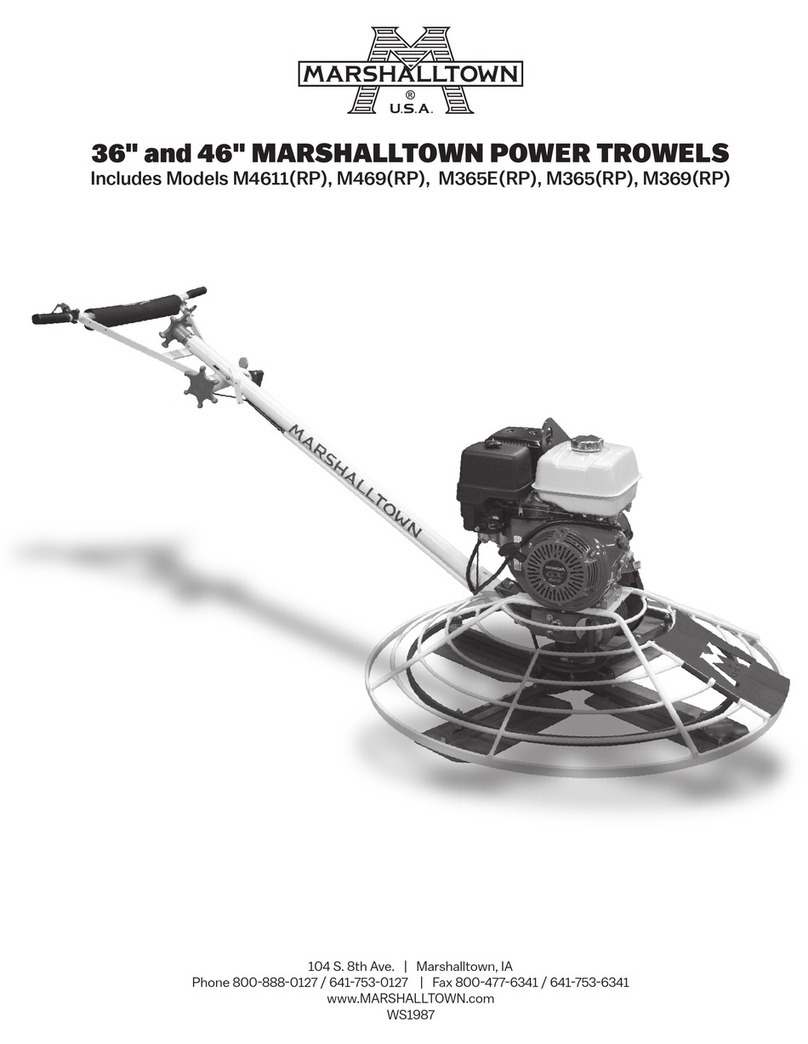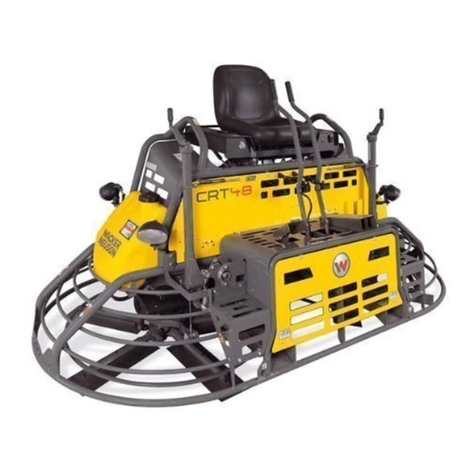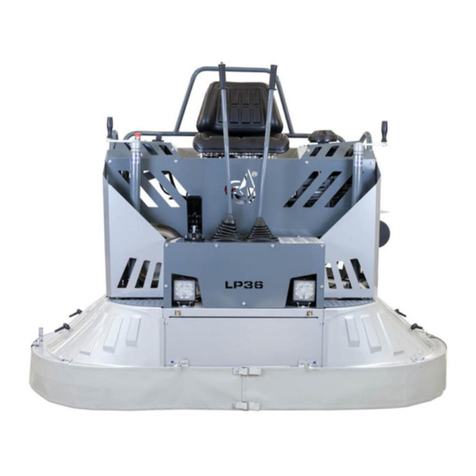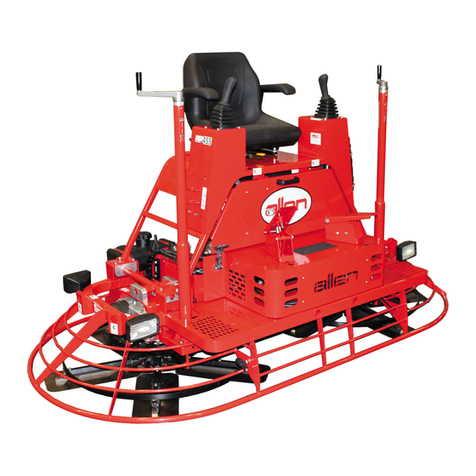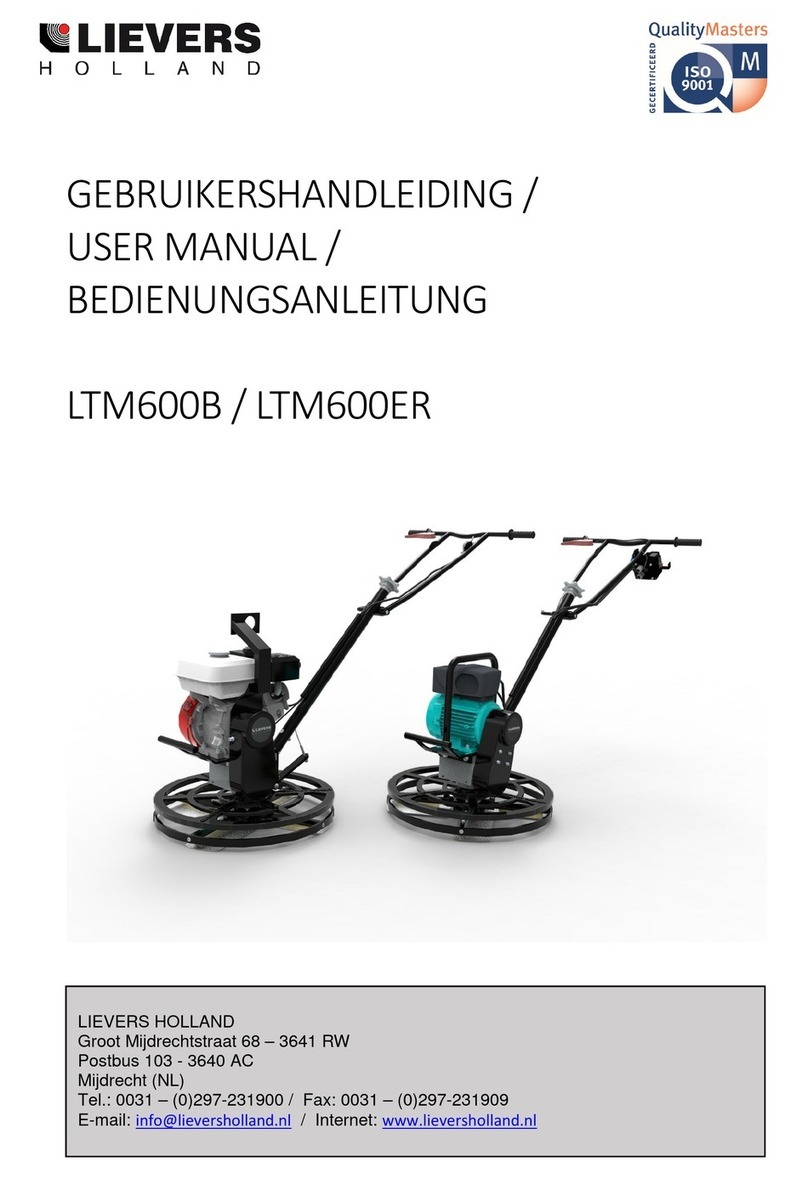
WARNING Vibration hazards
Normal and proper use of the machine exposes
the operator to vibration. Regular and frequent
exposure to vibration may cause, contribute to, or
aggravate injury or disorders to the operator’s
fingers, hands, wrists, arms, shoulders and/or
nerves and blood supply or other body parts,
including debilitating and/or permanent injuries or
disorders that may develop gradually over periods
of weeks, months, or years. Such injuries or
disorders may include damage to the blood
circulatory system, damage to the nervous system,
damage to joints, and possibly damage to other
body structures.
If numbness, persistent recurring discomfort,
burning sensation, stiffness, throbbing, tingling,
pain, clumsiness, weakened grip, whitening of the
skin, or other symptoms occur at any time, when
operating the machine or when not operating the
machine, stop operating the machine, tell your
employer and seek medical attention. Continued
use of the machine after the occurrence of any
such symptom may increase the risk of symptoms
becoming more severe and/or permanent.
Operate and maintain the machine as
recommended in these instructions, to prevent an
unnecessary increase in vibration.
The following may help to reduce exposure to
vibration for the operator:
►If the machine has vibration absorbing handles,
keep them in a central position, avoid pressing
the handles into the end stops.
►When the percussion mechanism is activated,
the only body contact with the machine you
must have are your hands on the handle or
handles. Avoid any other contact, for example
supporting any part of the body against the
machine or leaning onto the machine trying to
increase the feed force.
►Make sure that the machine is well-maintained
and not worn out.
►Immediately stop working if the machine
suddenly starts to vibrate strongly. Before
resuming the work, find and remove the cause
of the increased vibrations.
►Participate in health surveillance or monitoring,
medical exams and training programs offered
by your employer and when required by law.
►When working in cold conditions wear warm
clothing and keep hands warm and dry.
See the ”Noise and vibration declaration
statement” for the machine, including the declared
vibration values. This information can be found at
the end of these Safety and operating instructions.
WARNING Trapping hazard
There is a risk of neck ware, hair, gloves, and
clothes getting dragged into or caught by rotating
machine parts. This may cause choking, scalping,
lacerations, or death. To reduce the risk:
►Never grab or touch a rotating machine part.
►Avoid wearing clothing, neck ware or gloves
that may get caught.
►Cover long hair with a hair net.
DANGER Electrical hazard
The machine is not electrically insulated. If the
machine comes into contact with electricity, serious
injuries or death may result.
►Never operate the machine near any electric
wire or other source of electricity.
►Make sure that there are no concealed wires or
other sources of electricity in the working area.
WARNING Concealed object hazard
During operating, concealed wires and pipes
constitute a danger that can result in serious injury.
►Check the composition of the material before
operating.
►Watch out for concealed cables and pipes for
example electricity, telephone, water, gas, and
sewage lines.
►If the machine seems to have hit a concealed
object, switch off the machine immediately.
►Make sure that there is no danger before
continuing.
WARNING Involuntary start
Involuntary start of the machine may cause injury.
►Keep your hands away from the start and stop
device until you are ready to start the machine.
►Learn how the machine is switched off in the
event of an emergency.
WARNING Noise hazard
High noise levels can cause permanent and
disabling hearing loss and other problems such as
tinnitus (ringing, buzzing, whistling, or humming in
the ears). To reduce risks and prevent an
unnecessary increase in noise levels:
►Risk assessment of these hazards and
implementation of appropriate controls is
essential.
►Operate and maintain the machine as
recommended in these instructions.
►If the machine has a silencer, check that it is in
place and in good working condition.
Safety and operating instructions BG 244, 375, 479
8 © Construction Tools EOOD | 9800 1828 01 | 2018-01-09
Original instructions
